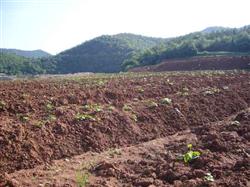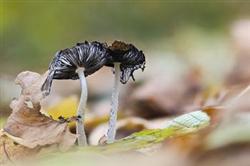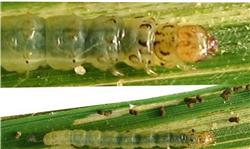What should we pay attention to when planting kudzu root?

What should we pay attention to when planting kudzu root? Please give an introduction to the planting of Pueraria lobata should pay attention to the following points: 1. Site selection: Pueraria lobata has strong adaptability and lax requirements for land conditions, but the sandy red loam with deep soil layer, fertile soil and good drainage is the best. 2. Land preparation: general dry land, ploughing about 33 cm, breaking and raking the soil surface to make a high border with a width of about 3 meters. On the border surface, two rows of planting holes are opened according to row spacing of about 1.5 meters and plant spacing of 0.65 meters. 600 plants can be planted for every 667 square meters (1 mu). For slopes with a slope of less than 25 °, there are two ways of land preparation: digging holes and trenches. Before digging holes or trenches, the mountain field must be cleared of weeds and weeds, and the soil must be reclaimed and loosened 15 centimeters deep. Dig holes and prepare soil after completely reclaiming and loosening the soil, press the horizontal strip 1.5 meters wide, dig caves 60 centimeters square, the distance between caves is about 1.5 meters, planting 300 Mel 500 plants every 667 square meters. After completely reclaiming and loosening the soil, trench preparation is dug along the contour line according to the topography, with a width of 80 centimeters and a depth of 80 centimeters, with a distance of 1 meter. Generally, 600 trees are planted every 667 square meters. 3. Fertilization: Pueraria lobata is a crop that needs more fertilizer, especially organic fertilizer and potash fertilizer. Base fertilizer can be used with mature compost or stable manure. In general, 2000,000kg is applied in dry land, 500kg of plant ash can be added, and 5000 kg is applied in sloping land. The base fertilizer should be evenly mixed with fine soil, applied in holes or ditches, and then covered with crushed soil. 4. Planting: after the late winter kudzu was harvested, the smaller tubers without disease and insect damage were selected to make kudzu, and the following spring began to promote germination and seedling. At the end of March and the beginning of April, when the bud germinated and grew into a stem vine of 100 cm in length, it could be planted. The cuttings required to be planted are short and stout, taken from the middle and lower part of the stem, with 2 or more branches. When planting, the cuttings should be obliquely inserted on the pre-arranged gedun (kudun), then the soil should be compacted, and the root water should be poured on overcast and sunny days. The planting depth is that the kudzu branch is slightly buried in the ground about 1 cm, and the bud is just exposed to the ground. 5. Management: when the height of the fixed seedling is 20 cm, the soil should be hoed loose, and at the same time, the soil should be slightly removed from the base of the kudzu seedling to dilute human feces and urine, and then be repeatedly irrigated every 20 days, a total of 2 murals for 3 times, and the application concentration and dosage should be increased step by step. After the root tuber was formed and expanded rapidly, topdressing should be re-applied once, with 1500 kg of mature human feces and urine, 15 kg of potassium dihydrogen phosphate, or 30 kg of compound fertilizer per 667m2, and stop topdressing 15 days before root harvest. GE is resistant to drought and waterlogging, and the principle of watering is that it would rather be slightly dry and avoid being too wet. Generally, it is to pour small water after planting to promote seedling growth, and usually combine fertilization for irrigation to keep the soil moist. In the seedling stage, such as weed breeding, can be ploughed and weeded, the appropriate depth of ploughing to 4Mel 5cm, after the formation of root tuber generally do not carry out intertillage. GE has strong resistance and few diseases, and there are a few pests, so special attention should be paid to underground pests. 6. Harvest: in production, Pueraria lobata was cultivated biennially, the buds from tuber roots were used for cutting propagation, seedlings were raised in winter and spring, planted in early spring, and harvested from October to December of the following year. Click to get more Pueraria planting technology click to get more medicinal plant technology
- Prev

Ganoderma lucidum planting technology: how to control ghost umbrellas by planting Ganoderma lucidum?
How to prevent and control ghost umbrellas by planting Ganoderma lucidum? Please introduce 1. The common morphological feature of umbrellas is that the cap is warhead-shaped or egg-shaped, jade white, gray or gray-yellow, and most of them have scaly hairs on the surface. The stalk is slender and hollow. After maturity, the cap unfolds, the fold changes from white to black, and finally dissolves into ink with the cap.
- Next

What should be paid attention to in the control of rice leaf roller?
What should be paid attention to in the control of rice leaf roller? Please give guidance on the control of Cnaphalocrocis medinalis, first of all to know the control time. The control time is determined through the progress of insect state development and the growth and decline dynamics of adults under the lamp, referring to the insect state calendar, combined with medium-and short-term weather forecast. In order to make sure that you can really handle it.
Related
- Fuxing push coffee new agricultural production and marketing class: lack of small-scale processing plants
- Jujube rice field leisure farm deep ploughing Yilan for five years to create a space for organic food and play
- Nongyu Farm-A trial of organic papaya for brave women with advanced technology
- Four points for attention in the prevention and control of diseases and insect pests of edible fungi
- How to add nutrient solution to Edible Fungi
- Is there any good way to control edible fungus mites?
- Open Inoculation Technology of Edible Fungi
- Is there any clever way to use fertilizer for edible fungus in winter?
- What agents are used to kill the pathogens of edible fungi in the mushroom shed?
- Rapid drying of Edible Fungi

